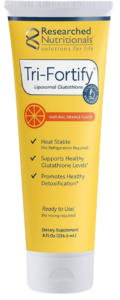It’s opt or drop time. And today we are looking at Tri-Fortify. It’s liposomal glutathione.
Why liposomal?
Liposomal glutathione is considered superior to regular glutathione due to its enhanced absorption and bioavailability. Regular glutathione is known to be poorly absorbed so there’s an additional process of adding fats to it while making the liposomal to make it more absorbable in our body, which has a lot of fat in it. Liposomes can pass through the cell membrane, which is important when you want to deliver glutathione directly to the cells.
Liposomal glutathione is more expensive than regular glutathione, but I definitely would say that the increase in price is worth it.
Glutathione
Let’s understand a little bit more about glutathione.
Antioxidant
It is one of the most powerful antioxidants. It neutralizes reactive oxygen species (ROS) and free radicals, which is important because that’s where oxidative damage and oxidative stress result from.
Vitamin C and E
Glutathione can also help regenerate vitamins C and vitamin E within our body, which is great because if you’re giving your child supplements like vitamin C and vitamin E, it would be great for the body to produce enough of it on its own. So glutathione is involved in that process.
Detoxification
You probably know about glutathione because of detoxification. That’s another thing that it does quite well. It can bind to a variety of toxins, and heavy metals such as lead and mercury. It can also bind to different mold mycotoxins. Eg aflatoxin is one that glutathione can bind and help process out of the body.
There are also different environmental chemicals that glutathione can bind to and help process out. So different things resulting from plastics and along those lines. So glutathione really covers the whole gamut of heavy metals, mold, and environmental chemicals.
Other benefits
Glutathione is also involved in redox reactions, which is great. It’s even involved in cellular processes like DNA synthesis and protein synthesis. Glutathione is involved in the cell cycle, so cell growth, cell proliferation, cell death, and everyone’s favorite immune system functioning. So glutathione is definitely involved in a lot of key aspects of maintaining optimal health.
Why does glutathione get low?
Now why would glutathione be low? Glutathione can be low for a variety of reasons.
- Different drugs you can take that actually deplete the body of glutathione.
- And like I was mentioning, all those different toxins. So you have mold toxins, heavy metals, environmental toxins,
- increase in inflammation, maybe from a virus or bacteria, which can also then deplete glutathione.
- And stress. So stress, like
- increased environmental stress. Like all those different toxins,
- Physical stress, maybe not sleeping, and
- emotional stress, we can’t discount that. So if your child is having trouble speaking, then that’s emotional stress, because they might be able to think and know what they want to say, but not have a way to communicate it. And that certainly is frustrating every day to get up and have that frustration of, hey, I can’t say what I want.
So these are all reasons why glutathione might be decreased in an individual.
Glutathione and autism
Now let’s get to autism. All right, so children with autism. The research has shown that 20 to 40% of children with autism have decreased glutathione levels compared to typically developing children. That’s what the research shows. So not every child with autism needs glutathione. You definitely want to be careful with what you do for your child. You know, the benefits I just went through, they sound fantastic, right? It’s like, yes, give me that. But you want to make sure that your child actually needs glutathione before giving it to them.
Make sure you have a strategy
Confirm low levels of glutathione and then know why they’re being depleted. Once you figure out what the reason is for them being depleted, you would want to attack that root cause while also increasing glutathione levels.
You want to have a really good strategy as to why you’re using glutathione, and you want to know the reasons why glutathione is decreased so that for the long term when you’re thinking about ‘I want my kid in college, I want them happy, I want them doing and pursuing what they love and not having to take all these different supplements.’ So that’s your long-term strategy, understanding what is causing that depletion. You certainly can help increase it in the short term, but you definitely want to understand long-term what is decreasing the glutathione so that you can address that.
Please don’t just give glutathione and hope for the best. That’s definitely not a good strategy. You’ll get exhausted and you’ll waste lots of money.
Tri-Fortify
Let’s get to Tri-Fortify.
Clinical trial
This brand has actually done one clinical trial. Here’s the link. I have the research, went through it, looked at it. It is a small clinical trial. So you would consider this basically like a phase one clinical trial. It was in 12 healthy adults. They were aged 50 to 80. The dose was 500 milligrams and 1,000 milligrams. Now these are healthy adults, so they were subjected to frequent blood tests. And it was a one-month study. It found that it took two weeks for the levels to really increase and start to peak.
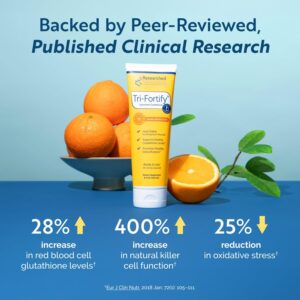
Time and dose
So if you’re starting to use glutathione, don’t expect next-day results, right? It takes some time, it takes consistency of giving the supplements and you also have to make sure you have the right dose.
Root causes
Now keep in mind, if you haven’t addressed what are the causes for the depletion, you’re gonna end up back and forth, like, you have glutathione, things look good, but then, you know, there’s kind of like maybe a step or two back, right? So if you’re ever in that kind of ‘things are going well, things are not going well, things are going well’, you really want to understand what is causing the depletion. So definitely keep in mind that when you’re using glutathione if it’s necessary. So you really want to get at why is glutathione being depleted?
What do the results say?
So the research was done right with Tri-Fortify and they found there’s an increase. So does this brand work? Yes, it does, but that wasn’t done in a clinical trial in kids with autism. And it was just a phase one to see if this product works. And so they have one clinical trial with 12 healthy adults showing that yes when you take this product, there is an increase in glutathione. So that’s good to know. We parents always want to make sure if we’re spending money, there’s a shot at it working.
Tri-Fortify and autism
Now, there’s no guarantee that it’s going to help your child with autism, but there is research, and obviously, that’s what the brand is. They try and do as much research and show research so that you know when you’re buying something it has been proven, but it doesn’t guarantee changes in your child.
Trying Tri-Fortify
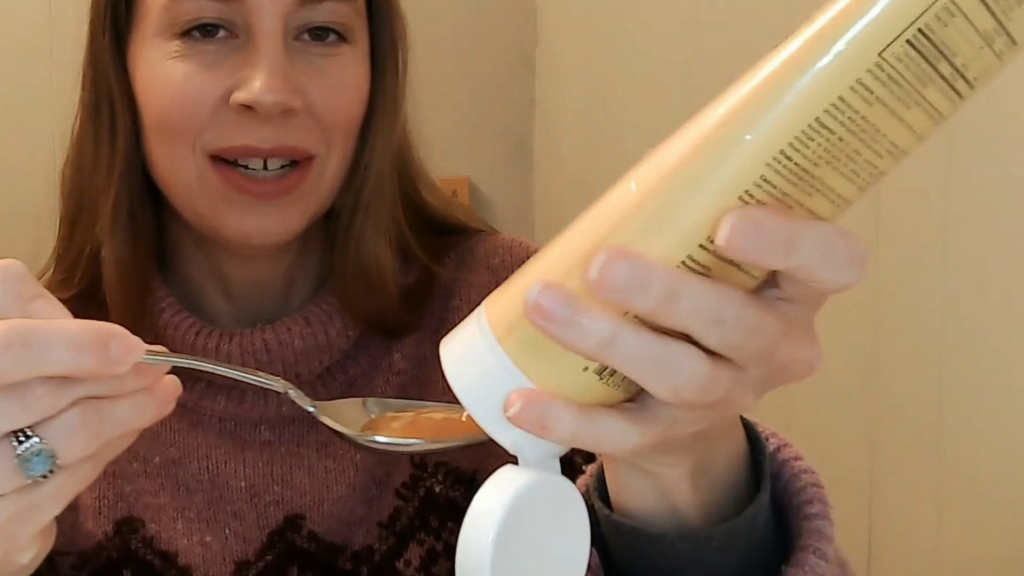
All right, so this is kind of like toothpaste-ish. I’ve had it before. But not in a long time. Basically, it is liquid-ish. You squeeze it onto the spoon. I will just take it.
I don’t like the taste. It is crazy sweet. You’re supposed to hold it under your tongue for 30 seconds to 60 seconds. I find that very difficult to do. I’ve got to tell you. I understand I’m taking it and ‘It’s good for you, Theresa’ but my mouth is like, yuck. It’s just very sweet. So some kids really like it. Some kids, once they start feeling better, right, don’t mind the taste of it.
My glutathione levels likely aren’t decreased. I haven’t really explored them lately in a while. So it’s not like when I take this, I’m like, ‘Oh, my gosh, I feel so much better’ Let me keep taking that.’ You want to make sure that you’re giving glutathione when it’s appropriate.
Another way of taking it
Some doctors say to mix that in a little bit of water. Now, that’s not what the bottle says. The whole idea is you want it to be absorbed into your body as much as possible. And that’s why you’re gonna hold it in your mouth and under the tongue. Right? So it can be sublingual.
When you dilute it in water, I’m not exactly sure how much decrease in bioavailability is gonna happen because it’s in the water and you’re just drinking it.
So if I were putting it in water, it would be somewhere around that. I should have measured. So it hangs out at the bottom. It can swirl around. Obviously, it changes consistency. I’m mixing it with a spoon, so it does get a little cloudy.
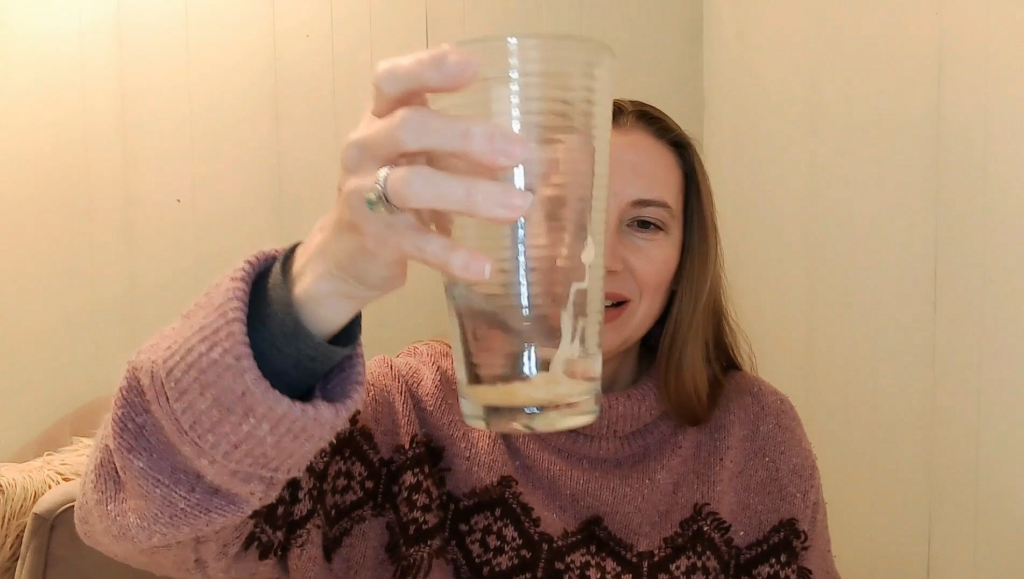
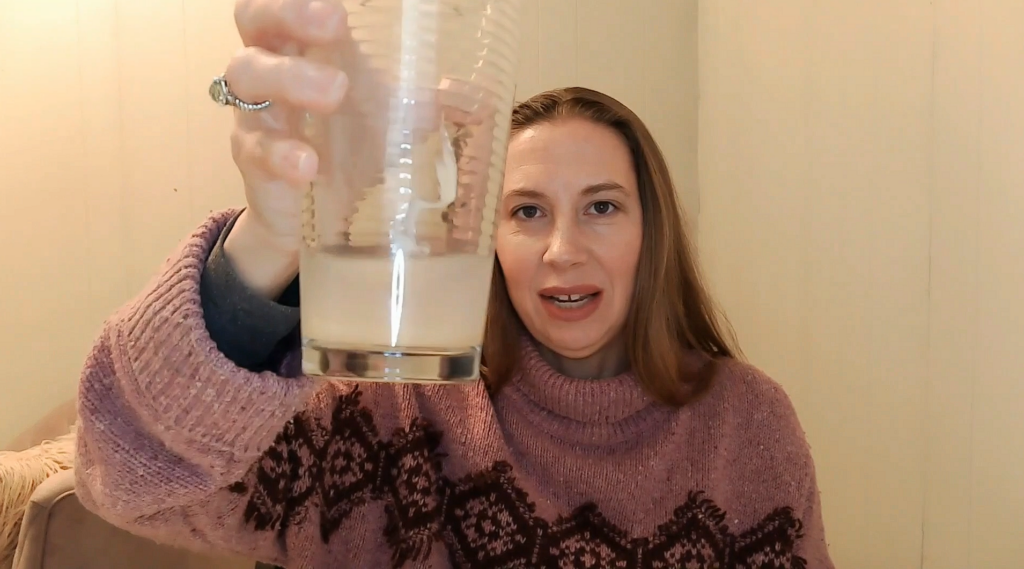
Now, see, that tastes great. I like that. It’s got a pleasant taste. I think that’s great. Right from the tube, it’s a little too strong for me. Maybe I could say, okay, fine, maybe not take the full dose at once. Maybe take a little bit. I would be that kind of kid, you know, so there.
There are different strategies, right? So that might have just been too much at once. If I were a parent and I knew for sure that my child needed it first off, I would talk to them and tell them why we’re doing this and how it should be helping them feel better and all of that so that we were on the same team. I would try and give them the full dose. If they had that resistance, I would say, all right, how about we try half and see how it goes? So, sometimes you just have to make small steps in progress.
Diluting it in the water is great. I’m not too sure about the efficacy. I think it tastes great in the water. Absolutely fantastic.
Opt or drop?
Tri-Fortify is definitely an opt. It is a fantastic product. Glutathione is important for some kids with autism. You really want to have a strong strategy as to why you’re using it. This is the liposomal formula, and you are supposed to keep it under your tongue, which can be a little tricky. But it definitely has clinical research that shows it does work in healthy adults. And I think it’s certainly a great product. I’ve seen many doctors recommend it, and it is for sure an option.
Confused by all the information about autism? I’ve got you. Click the link to see how we can work together. Let me break down the science and provide you with clear, actionable steps to make your path forward.

